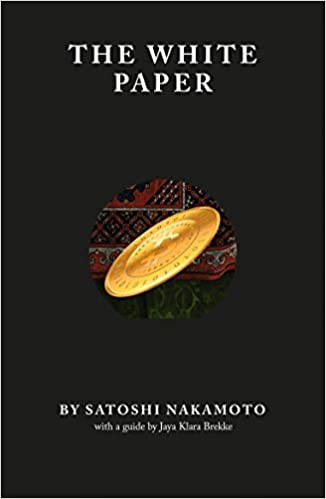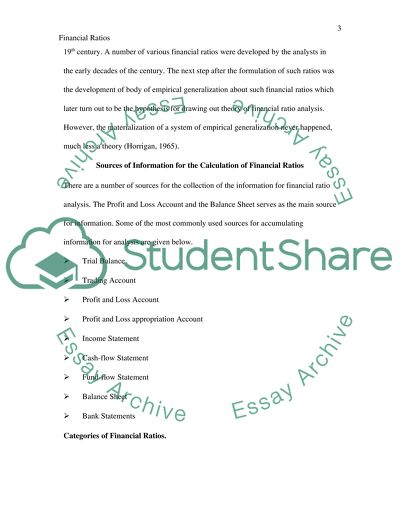
Increasing decision utility by allowing voters to vote probabilistically may be useful for increasing participation. This inclusive system may also lead to an outcome that better reflects the aggregate preference of the community. Consistent with Proposition 1, of the receivers who randomized, more than half (66.0%) were willing to pay a strictly positive amount of money to use the randomized choice instead of the binary choice. The receiver is informed that the computer will match her responses to the actual offer made by the proposer.

Decision Architects understand that choosing what information to provide determines how people compare the items in an option set, and consequently, how they decide. This example also demonstrates how people respond to options that are too different and, thus, not easy to compare, because neither option is clearly preferable to the other. Unless there how many options does a binary choice offer is a strong preference for a particular home or location, there are difficult tradeoffs to make in deciding whether to live on the lake or in the woods. The outcomes of binary decisions—in which people decide whether to do something—are often very different from decision outcomes in contexts that involve more than a simple yes or no choice.
Binary Choice Questions: Design Considerations
With non-binary decisions, the choices we make aren’t based on simple yes or no answers. (a) Probability of correct answers as function of rescaled accumulated answers of previous respondents (n
A − n
B) ln (s) + ln (p). Black, open symbols correspond to D
1, and blue filled circles to D
2.
- In fact, for each question, there should be those who know the correct answer and those who do not.
- Some binary options can be closed before expiration, although this typically reduces the payout received (if the option is in the money).
- Unregulated binary options brokers don’t have to meet a particular standard.
- And the sharing economy was built by injecting alternatives into binary decisions, such as whether to own an automobile.
- To examine the hypothesis above, we ran two OLS regressions to check the response time of receivers at MRO and MAO compared to other unequal allocations.
The type of the employed decision making rule affects the possibility, final state, speed, and other dynamical phenomena of collective opinion formation. However, in physics and even social sciences literature, justification of these different types of models is at best based on a qualitative assessment of human behavior. Beyond opinion dynamics, social dilemmas, which in many cases are based on binary decision making, also offer an opportunity to bridge theory to experiments [7, 8]. Despite the similarities in the results, proposers’ decision-making processes are likely to be different from those of receivers. In addition to incomplete preferences, proposers may also face strategic uncertainty. Hence, even though the findings from the proposers were broadly similar to those of the receivers, they may not be solely attributable to conflicting preferences.
Your Answer
We discuss three possible uses of randomization at the individual, organizational, and societal level. Allowing individuals to express conflicting preferences through randomized choices could help to reduce default bias. Individuals are often found to behave overly cautious, i.e., sticking to the default too long, when facing important and difficult decisions (Levitt, 2021; Sautua, 2017).
Experimental participants were found to deliberately randomize in repeated choices even when they were explicitly told that the choice set in each decision was the same (Agranov & Ortoleva, 2017). While these studies used monetary lotteries to examine indecisiveness, we chose the ultimatum game instead of monetary lotteries as the workhorse because conflicting social preferences are among the most important reasons for indecisiveness in real life. Furthermore, three design features of our experiment allow us to more directly examine indecisiveness and rule out alternative explanations. First, in the ultimatum game the receiver’s payoff following acceptance or rejection is certain, hence the randomized choice is a simple lottery. This avoids the confounding effect of making the randomized choice due to violations of rules to reduce compound lotteries. Since choosing acceptance or rejection does not induce regret, the receiver will not use the randomized choice to avoid regret.
Access options
This implies that the receiver is more likely to choose an interior acceptance probability (\(0) for offers between MRO and MAO. Further, the acceptance probability will move away from 0 and increase when the receiver’s share approaches MRO from below, and it will also move away from 1 and decrease when the receiver’s share approaches MAO from above. Neuroimaging studies provide evidence that receivers face conflict at MRO and MAO. Here we focus on the description of the mechanisms behind the process of information aggregation and decision making, a basic step to understand emergent phenomena in society, such as trends, information spreading or the wisdom of crowds. In many situations, agents choose between discrete options.
- Why does the number of people who would purchase the Sony player shift from 66% in the first example to 27% in the second example?
- After all attributes are read and responded to, subjects report their final choice.
- The consequence of this is revisiting a previous decision you made.
- It might have been the decision to class up your dry toast in the morning, or the decision to find a new way to sweeten your oatmeal.
Consistent with the indecisive behavior specified in Proposition 1, the acceptance probability in randomized choice increased with receivers’ share. Ganzach (1995) placed Shafir’s enriched-impoverished result in the larger context of both multi-alternative choice and single-alternative judgments. In the data closest to Shafir’s, Ganzach’s Experiment 2 examined the choice among three alternatives under both select and reject instructions. Because one alternative was always a distracter, it is possible to reduce his data to binary choice. That is, on average, the enriched option was chosen more frequently under rejection (.28) than under selection (.22) (see Wedell, 1997).
How Does This Binary Choice Question Stack Up Against Good Design Criteria
In binary choice, which is the focus of the present work, selecting and rejecting seem not only equivalent in their logic, but nearly equivalent in their cognitive processes. Regardless of which approach is used, individuals must perform a comparative evaluation with the goal of identifying one alternative as superior and one as inferior. Nonetheless, substantial differences between selection and rejection have been observed. Ganzach explained his data not in Shafir’s terms of differential weighting of alternatives’ components, but rather by claiming that selection causes greater commitment to the chosen alternative. “An accept choice is likely to entail more commitment than a reject choice. One has to live with the alternative he accepts, but not with the alternative he rejects” (Ganzach, 1995, p. 115).
US, China should bury the hatchet for sake of global stability – New Straits Times
US, China should bury the hatchet for sake of global stability.
Posted: Sun, 06 Aug 2023 18:32:36 GMT [source]
Greater importance is assigned to the two cases of compatible information, namely positive features when selecting or negative ones when rejecting. Let’s take a look at an example involving Financial Engines, Inc., a provider of advisory services for employer-sponsored retirement plans. Their Online Advisor application helps plan participants make better savings and investment decisions, with the goal of improving their retirement security.
Choice sets offering options that are too similar can also cause difficulty, especially when decision makers feel they must justify their decisions and no option is clearly superior to the others. To examine the hypothesis above, we ran two OLS regressions to check the response time of receivers at MRO and MAO compared to other unequal allocations. Columns (1) and (2) of Table 2 show that the decision time taken at MRO and MAO is significantly longer than at other unequal allocations in both the binary choice stage and the randomized choice stage. These findings are consistent with our interpretation that receivers face a stronger conflict at MRO and MAO than at other unequal allocations. It’s critical for executives to overcome this cognitive tendency to quickly make insufficiently informed binary choices.
This chapter introduces one of the fundamental pillars of choice modeling, the canonical model for choice between two alternatives. Unless people are experts in a particular domain, they generally make decisions based on the information available to them. In the example shown in Figure 1, which lets people compare health-insurance policies, the attributes of each type of policy appear in an easy-to-compare, tabular layout. Customers would likely make a decision based on the benefits and costs that the table provides, so the designer of the table should be sure to include the policy attributes that would best enable people to make the right decision.
Two birds, one stone? Positive mood makes products seem less useful for multiple-goal pursuit
Of course, whether I go for a run or not shouldn’t be a binary decision. Note that the motives behind the proposer’s decisions are more complicated and different from the receiver. In addition to the (potentially different) conflicting motives that the receiver faces, the proposer also faces strategic uncertainty. Consistent with Proposition 2, receivers’ WTP for randomization has an inverse-U shape with the randomization probability. First, they report their subjective evaluation of the information (i.e., the attribute’s diagnostic value) on a 1-to-9 scale, anchored on “Strongly favors E” (1) and “Strongly favors M” (9).

As you’ve seen in our example, the doctors opted simply to send the patient to surgery. Note how the number of people who would delay their decision increases from 34% in the first scenario to 46% in the second scenario. [1] When people don’t know what to decide, they often delay their decision, opting not to decide until they have more information. Simply adding or removing options from a choice set can significantly influence both the complexity of the decision and the decision outcome. While the first result is inconsistent with standard models, it is not sufficient to show indecisiveness.
The top panel reports the pair of allocations faced by the proposer and her decision to make the unequal offer to the receiver. To help the receiver recall her decisions, this panel also reports the receiver’s binary choice and her randomized choice in Stage 1 and Stage 2 for the corresponding offer. The bottom panel implements the Becker-DeGroot-Marschak mechanism (Becker et al., 1964) in a multiple price list with 11 rows, each of which requires a decision from the receiver. In each row, the fee to use the randomized choice is specified in the first column. For each row, the receiver has to choose if she is willing to pay the stated fee to implement the randomized choice instead of the binary choice to determine the final payoff. While not stated in this figure, the receiver is told in an earlier instruction screen that the binary choice is free of charge.
Binary decisions in everyday life show themselves in much the same way. We use this binary code to dictate pathways in computers, with one being a yes and zero being a no. We also thank Shintaro Mori for discussion and giving us information about the detailed procedure of their data acquisition. We also acknowledge insightful discussions with Gonzalo G.

The options used loaded language and were not diametrically equal opposite. While one option may get a higher agreement percentage, the contrast isn’t as stark. Agreement scales allow the respondent to “have his cake and eat it too.” Binary choice questions make you cast your fate with one of them. If the trader wanted to make a more significant investment, they could change the number of options traded. For example, selecting three contracts, in this case, would up the risk to $120, and increase the profit potential to $180.
